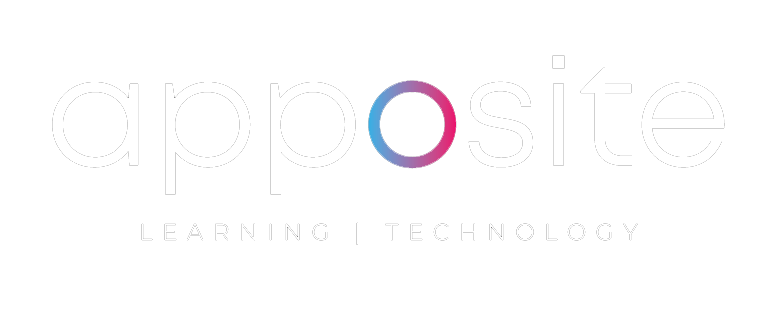Let me tell you about the most expensive performance art in corporate America.
Every year, organizations spend $774 per employee on training. Globally, we’re talking hundreds of billions. And here’s what you’re actually buying:
72 hours of retention.
Maybe less.
Your compliance modules? Forgotten by Friday. That leadership workshop? Gone by the time they’re back at their desk. That expensive onboarding program? They’ll relearn it all from Karen in accounting anyway.
You’re not running a learning function. You’re running an amnesia factory with a training budget.
The Uncomfortable Truth No One’s Saying
In 2025, 71% of L&D professionals are “exploring” AI. You know what that actually means? They’re panicking.
Because they know.
They know the CEO is looking at that $774 per head and asking: “What are we actually getting?”
They know the training completion metrics are vanity stats that predict exactly nothing about performance.
They know that when the next budget cut comes, L&D is on the list. Right after the team-building retreats and the free LaCroix.
Here’s What Actually Changed (And It Happened While You Were Scheduling Another MOOC)
AI didn’t arrive to “augment” your learning design process.
It arrived to replace the parts you’re doing badly.
The parts where you:
- Build one-size-fits-all courses for diverse learners
- Guess at skill gaps instead of measuring them
- Report completion rates instead of capability growth
- Design for coverage instead of retention
- Intervene weeks too late because your data is fossilized
AI-powered learning systems are already showing 2–2.5× higher learning gains than traditional approaches. They’re cutting study time by 27% while maintaining outcomes. They’re spotting struggling learners in real-time, not in your quarterly review deck.
This isn’t theory. The data is here. The tools exist.
The question is: why are you still designing like it’s 2015?
The Real Threat (And It’s Not the Robots)
AI won’t take your job. Irrelevance will.
The L&D teams that survive the next 36 months won’t be the ones who “beat” AI or the ones who ignore it. They’ll be the ones who figured out what humans are actually better at:
- Problem framing — What capability gap is actually costing us money?
- Context and culture — Why would anyone in this organization care about this skill right now?
- Psychological safety — How do we create practice environments where failure teaches instead of threatens?
- Storytelling — How do we make this learning resonate instead of just inform?
AI can draft scenarios. It can’t make them culturally intelligent.
AI can score practice attempts. It can’t coach someone through their fear of looking stupid.
AI can recommend the next module. It can’t sense when someone needs a conversation instead of content.
If you’re spending your time doing things AI can do, you’re not a learning designer. You’re a placeholder.
What It Looks Like When You Stop Pretending
Here’s the play for organizations done with theatre:
- Stop Designing Courses. Start Solving Problems: Pick 3–5 business-critical capabilities where performance is costing you actual money. Not vague competencies. Observable tasks. Things you can measure in dollars or hours or quality.
- Build for Forgetting, Not Just Learning: The Ebbinghaus forgetting curve isn’t a theory – it’s a law. Without reinforcement, 50–80% of new learning vanishes within days. So build spaced retrieval into the calendar from day one. Not as an afterthought. Not as “bonus reinforcement materials.” As the core mechanic. One-and-done modules are donations to the forgetting curve.
- Let AI Do the Grunt Work
Use AI to:
- Assemble personalized diagnostic paths
- Generate practice scenarios at scale
- Surface real-time struggle signals
- Adapt the next activity based on learner performance, not your hunches
You focus on:
- Deciding what’s worth learning
- Making it emotionally resonant
- Creating conditions for transfer
- Coaching humans through the hard parts
- Measure Capability, Not Compliance
Stop tracking:
- Completion rates
- Seat time
- Course enrollments
Start tracking:
- Time to competency
- Task performance quality
- Decision accuracy
- On-the-job application
If your metrics wouldn’t convince a CFO, they’re the wrong metrics.
- Upskill or GetOutskilled
Your team needs new muscles:
- Prompt engineering — How to make AI your design partner, not your clipboard
- Learning analytics — How to read signals and intervene in real time
- Data literacy — How to translate performance data into design decisions
The designer who can’t work with AI is the designer who can’t compete.
The Stakes (In Case You’re Still Not Sweating)
Talent leaders expect AI to reshape most roles in the next 2–3 years. That’s not a prediction. That’s a planning assumption.
Which means every employee needs to learn new skills. Fast. At scale. In the flow of work.
Your current model – cohort-based, static, completion-focused- wasn’t built for that. It was built for a world where skills had a 10-year shelf life and training was an annual event.
That world is gone.
The organizations that adapt will have L&D functions that look like capability engines: adaptive, data-informed, tightly coupled to performance.
The ones that don’t will have L&D functions that look like cost centers.
Then they won’t have L&D functions at all.
What You Do Next
If you’re reading this and feeling defensive: You’re clinging to a model that doesn’t work anymore. Let it go.
If you’re reading this and feeling overwhelmed: Start small. Pick one skill. Build one adaptive path. Measure one capability outcome. Prove it works. Scale it.
If you’re reading this and feeling excited: Good. Channel that into action. Because excitement without execution is just expensive daydreaming.
The future of L&D isn’t human vs. AI.
It’s designers who leverage AI vs. everyone else standing in the unemployment line wondering what happened.
Choose accordingly.
Want to see what AI-powered learning design actually looks like in practice? We built Acume—an AI-enabled LMS that does the adaptive path-building, real-time analytics, and personalization work so your designers can focus on the human stuff that actually matters. No sales pitch. Just a tool for people done with forgetting machines.

